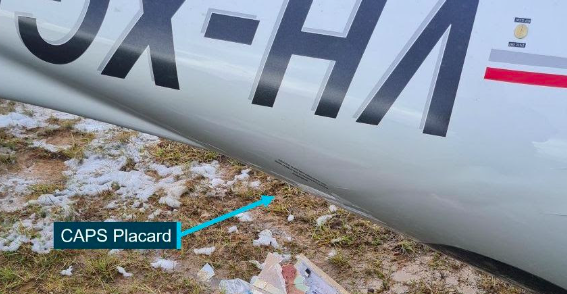Lessons Learned: Site Hazards, Go-Around Challenges

Cirrus Bankstown landing accident highlights site hazards for first responders, go-around challenges.
A Cirrus SR22 landing accident at Bankstown Airport (New South Wales) highlights both the hazards of inadvertent discharge of rocket-propelled parachute recovery systems to first responders and the challenges of conducting a go-around to recover from an unstable landing.
This ATSB (Australian Transport Safety Bureau) investigation report from the accident details that at the end of a private flight from Southport, Queensland, on March 17, 2023, the SR22, with a single pilot on board, sank during landing and bounced along the runway for about five seconds, before rapidly entering a steep climbing turn to the left, up to about 40 ft off the ground.
As its bank angle exceeded 90°, the aircraft dropped onto the left wing and nose, coming to a rest upside down on the grass between runways.
The ATSB found that in the early stages of a go-around from the unstable landing, the pilot was unable to counter the substantial torque effect associated with high engine power, low airspeed, and high pitch angle, resulting in loss of control and collision with terrain.
Emergency services extricated the pilot from the wreckage, but the pilot later died in hospital due to injuries sustained in the accident.
“The site commander was initially unaware that the aircraft was equipped with a rocket-propelled parachute, which was subsequently made safe from inadvertent activation by a Cirrus-qualified maintenance engineer,” ATSB Director Transport Safety Stuart Macleod said.
While the aircraft’s Cirrus Airframe Parachute System (CAPS) is credited with saving a number of lives, Mr Macleod noted it presents a serious post-accident hazard where it has not been deployed and the aircraft is damaged.
“If the rocket is inadvertently activated, anyone in its path would be seriously or fatally injured,” he said.
While Cirrus has issued an Advisory Guide for First Responders to provide awareness of CAPS and to reduce the risk of inadvertent post-accident activation, the ATSB found the training and education provided by Cirrus on the hazards of CAPS post-accident had limited reach, and that the placards installed on the accident aircraft type did not clearly communicate the danger or provide access to safety information.
Since the accident, Cirrus has enhanced the external placarding on two new aircraft models (including the SF50). It is also reviewing the possibility of enhancing the placard that was certified with its SR20, SR22 and SR22T aircraft.
Mr. Macleod noted the investigation also highlights that a go-around to recover from an unstable landing is more dynamic and presents a greater challenge than a go-around on approach.



